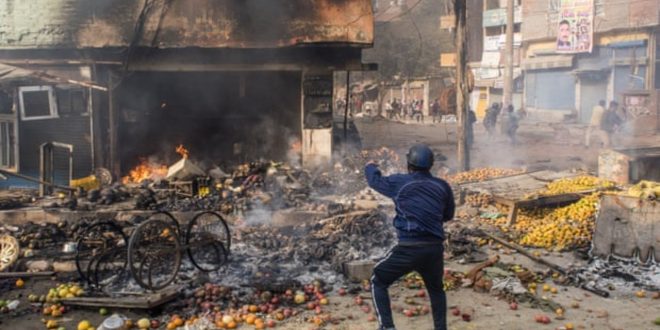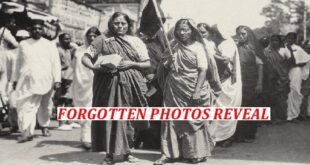28-10-2021
By SJA Jafri (Courtesy Al Jazeera)
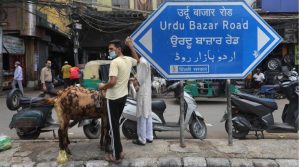 NEW DELHI/ KARACHI: Last week, Hindu right-wing forces in India forced a leading firm to withdraw its festive season advertisement after it featured a couple of words from the Urdu language, which in the popular imagination in the country is a “Muslim language”.
NEW DELHI/ KARACHI: Last week, Hindu right-wing forces in India forced a leading firm to withdraw its festive season advertisement after it featured a couple of words from the Urdu language, which in the popular imagination in the country is a “Muslim language”.
The company, FabIndia, issued an advertisement for Diwali, a significant Hindu festival that falls next month showcasing its latest collection of clothes. The text at the top read: “Jashn-e-Rivaaz”.
“Jashn” in Urdu means a celebration while “Riwaaz”, which is actually “Riwaaj”, means tradition. The title translated to “A Celebration of Tradition”.
But a young parliamentarian belonging to Prime Minister Narendra Modi’s Bharatiya Janata Party (BJP), who often makes headlines for his Islamophobic remarks, was not happy.
“Deepavali is not Jashn-e-Riwaaz,” 30-year-old Tejasvi Surya posted on Twitter, calling Diwali by its more traditional name.
“This deliberate attempt of Abrahamisation of Hindu festivals, depicting models without traditional Hindu attires, must be called out.”
 FabIndia is a household name in India and sells clothes, furniture, home furnishings and food items. It has hundreds of showrooms across the vast country and abroad.
FabIndia is a household name in India and sells clothes, furniture, home furnishings and food items. It has hundreds of showrooms across the vast country and abroad.
Surya said the company “must face economic costs for such deliberate misadventures”.
Soon, other members of the BJP and other Hindu nationalist groups started attacking FabIndia on social media, accusing the brand of “hurting” the religious sentiments of Hindus.
“The Hindutva project sees Urdu as a ‘Muslim’ language. And invisibilising Urdu is part of the larger project of marginalising the Muslim community, in fact, physically eliminating it,” Nivedita Menon, professor at the Centre for Political Studies at New Delhi’s Jawaharlal Nehru University, told Al Jazeera.
“Hindutva” refers to a century-old Hindu supremacist movement which seeks to convert India into an ethnic Hindu state.
Urdu was born in India
The Urdu language was born in northern India during the Mughal rule. Linguists and historians say Urdu and Hindi originally developed from Khadi Boli, a dialect of the Delhi region, and Prakrit. It also borrowed heavily from Persian, Turkish and Arabic languages.
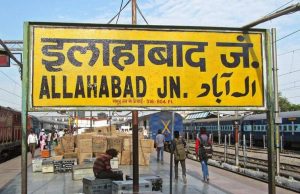 Until the British colonized the subcontinent, Urdu and Hindu languages were collectively referred to as Hindustani. It was British linguist John Gilchrist who for the first time classified and defined Hindustani into two broad categories – words inspired largely by Persian and Arabic were identified as Urdu, and those inspired by Sanskrit became Hindi.
Until the British colonized the subcontinent, Urdu and Hindu languages were collectively referred to as Hindustani. It was British linguist John Gilchrist who for the first time classified and defined Hindustani into two broad categories – words inspired largely by Persian and Arabic were identified as Urdu, and those inspired by Sanskrit became Hindi.
However, spoken Urdu is similar to Hindi and the two share a common grammar and a large percentage of their vocabulary.
For centuries, Urdu was widely spoken by Hindus, Muslims and Sikhs in undivided India. Many of its celebrated poets and writers are non-Muslims, including Munshi Premchand, Rajinder Singh Bedi, Firaq Gorakhpuri and Gulzar to name a few.
Today, Urdu is among the 22 languages officially recognized by the Indian constitution.
Apart from poetry and literature, Urdu had a huge influence over Bollywood, the site of India’s “Hindi” film industry based in the western city of Mumbai. A large number of Urdu poets and writers wrote film scripts, songs and dialogues but many believe that too has changed in a religiously polarized India.
After the FabIndia controversy, many social media users shared memes featuring popular Bollywood dialogues and songs, replacing their Urdu words with Hindi counterparts in an attempt to showcase that the effect is not the same.
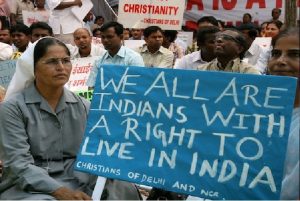 Screenwriter Javed Siddiqui, who has written several Bollywood films, told Al Jazeera that Urdu had a “better position than any other language” in the Indian film industry and that the “trend changed in the past few decades”, but Siddiqui added that the influence of Urdu in India’s popular culture will always remain.
Screenwriter Javed Siddiqui, who has written several Bollywood films, told Al Jazeera that Urdu had a “better position than any other language” in the Indian film industry and that the “trend changed in the past few decades”, but Siddiqui added that the influence of Urdu in India’s popular culture will always remain.
“You cannot write [any song] without ‘dil’ (heart in Urdu) and ‘mohabbat’, ‘ishq’ [both mean love in Urdu] and so on. I don’t think there is a lack of words in Hindi or it doesn’t have words but the phonetics and the music which Urdu has, no other language can provide,” he said.
Legendary Urdu writer Saadat Hasan Manto, who died in 1955, perhaps summed it up best.
“Why are Hindus wasting their time supporting Hindi, and why are Muslims so beside themselves over the preservation of Urdu? A language is not made, it makes itself. And no amount of human effort can ever kill a language.”
When did Urdu-Hindi divide begin?
During the 400-year-old Mughal rule of the Indian subcontinent, Persian was the official language of the administration.
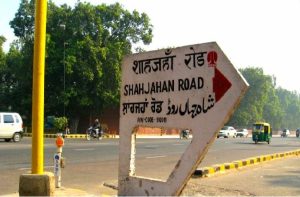 When the British East India Company started ruling India in the middle of the 19th century, it replaced Persian with English at higher levels of administration and local vernaculars at the lower levels.
When the British East India Company started ruling India in the middle of the 19th century, it replaced Persian with English at higher levels of administration and local vernaculars at the lower levels.
“From 1857 onwards, this Hindi-Urdu dispute was created, particularly in present-day Uttar Pradesh state, which continued until 1900,” Mohammad Sajjad, a professor of history at the Aligarh Muslim University in the same state, told Al Jazeera.
Sajjad said the linguistic divide, “aggravated by the colonial state”, was based on the script. Urdu uses Nastaliq, borrowed from the Perso-Arabic script, while Hindi uses the Devnagri script.
Christopher Rolland King in his book, One Language, Two Scripts: The Hindi Movement in Nineteenth Century North India, wrote that Hindi and Urdu are “considered two different languages on political and cultural, not linguistic, grounds”.
As demands to make Devnagri official script for Hindi grew, the British administration in 1900 ordered the optional use of the script in courts. Since then, Hindi increasingly came to be associated with north Indian Hindus, and Urdu with Muslims.
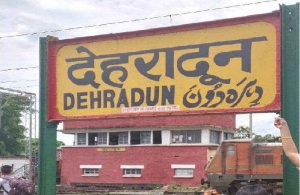 In his book, The Hindi Public Sphere 1920-1940: Language and Literature in the Age of Nationalism Paperback, Orsini Francesca explains: “The Hindi-Urdu controversy of the late 19th century was not only a competition between old service elites and new groups, a competition for jobs and status; it was also a struggle for cultural self-assertion, with several symbolic undertones.”
In his book, The Hindi Public Sphere 1920-1940: Language and Literature in the Age of Nationalism Paperback, Orsini Francesca explains: “The Hindi-Urdu controversy of the late 19th century was not only a competition between old service elites and new groups, a competition for jobs and status; it was also a struggle for cultural self-assertion, with several symbolic undertones.”
Despite Urdu’s Persian-Arabic script and its so-called “Muslim” association, many leaders of India’s freedom movement used the language in their fight against British rule.
Linguist Ganesh N Devy told Al Jazeera that when iconic freedom fighter Subhas Chandra Bose, from what is now the West Bengal state, formed an army to fight the British in 1942, he named it “Azad Hind Fauj”. “Azad” in Urdu means free or independent while “fauj” is an army.
“He did not use ‘swatantra’, the Hindi word for freedom,” he said, adding that most slogans of the freedom movement were in Urdu, including “Inquilab zindabad” (Long live revolution).
“There is a move towards unity and also a move towards segregating the two, and both the tendencies existed in pre-independent India during the late colonial times,” Devy said.
He said while Urdu was given the respect it deserved after India’s independence by its inclusion in the eighth schedule of the constitution, the language was now “under attack”.
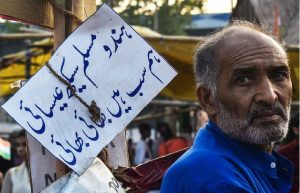 Devy said Urdu was among the top seven languages spoken in the country, according to the 2001 census. In the 2011 census, the data of which was disclosed in 2018, the “fortunes of Urdu started sinking in our country”.
Devy said Urdu was among the top seven languages spoken in the country, according to the 2001 census. In the 2011 census, the data of which was disclosed in 2018, the “fortunes of Urdu started sinking in our country”.
“When the [2021] census takes place, my fear is that many speakers of Urdu might simply report Hindi as their mother tongue. There is a fear perception among Urdu speakers of getting identified as Muslims though Urdu is not a language of Muslims,” he said.
Experts say while the number of Urdu speakers in India was dwindling, Hindi speakers have shown steady growth since independence. The ruling BJP has time and again hinted at making Hindi India’s national language, but has so far faced stiff opposition from non-Hindi speaking states, mainly in the south and the east.
‘Outrage against ad manufactured’
Writer and historian Rana Safvi questions the right-wing argument that Urdu is the language of Muslims.
“If Urdu was a Muslim language, people would be reading the Quran in Urdu and not in Arabic and Muslims in [West] Bengal and Kerala would be speaking Urdu and not their local languages such as Bangla and Malayalam,” she told Al Jazeera.
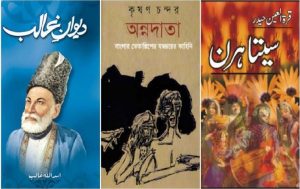 Safvi said Urdu was projected as the language of Muslims because of its Perso-Arabic script.
Safvi said Urdu was projected as the language of Muslims because of its Perso-Arabic script.
“In 1947, when Urdu became the national language of Pakistan, this association was strengthened,” she said, adding that it was for the same reason the language did not get the “kind of attention it should have otherwise got” in India.
Apoorvanand, a professor of Hindi at Delhi University, said it is a fact that post-1947, the Hindus and even Sikhs moved away from Urdu and the language was “sheltered by the Muslims”.
“We should be grateful to them for saving one modern language,” he said, adding that Urdu was “defamed and attacked because of its association with Muslims and Pakistan”.
It is for these reasons that politics around the language intensified since the BJP came to power in 2014.
Academic Menon said the “outrage against the (FabIndia) ad was manufactured” and not a “genuine outrage on the part of ordinary people”.
Ali Khan Mahmudabad, a historian and political scientist who teaches at Ashoka University in the capital, agreed with Menon and said the whole controversy was broadly more illustrative of the “deep-seated prejudice over anything associated with Muslims now”.
 Pressmediaofindia
Pressmediaofindia
